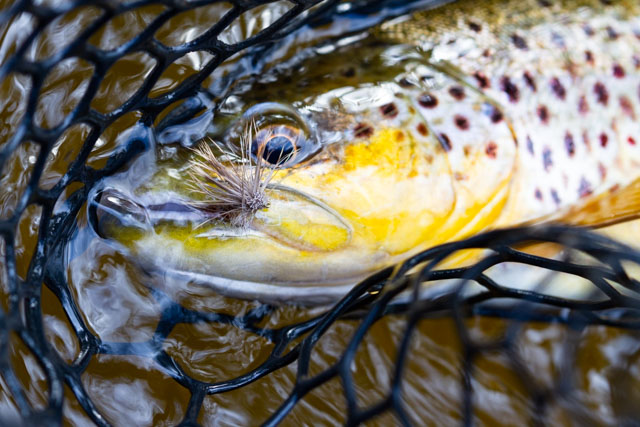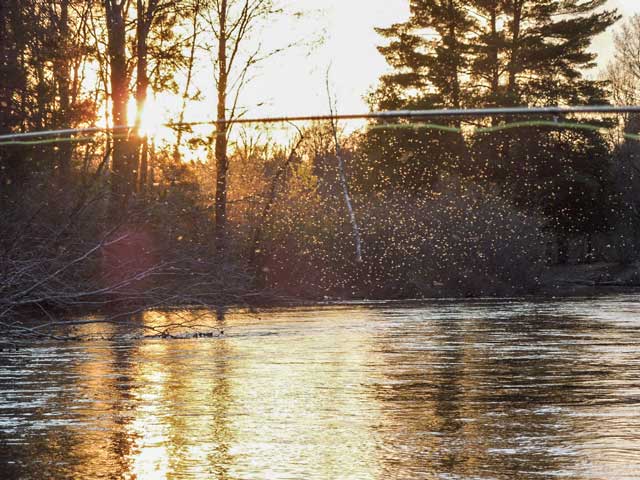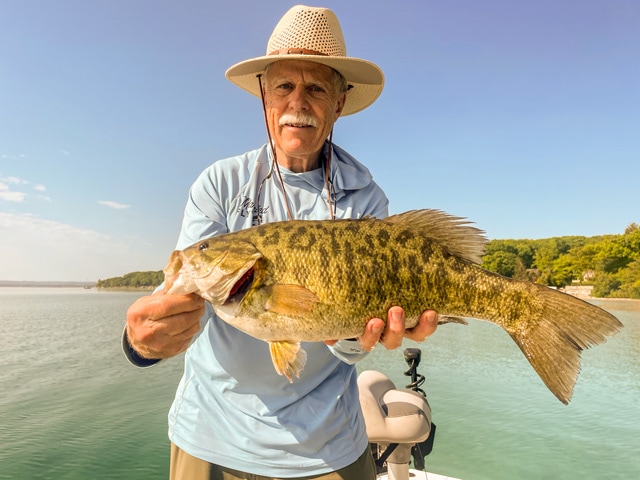Hendrickson Mayfly
The Hendrickson Mayfly, Ephemerella subvaria, is one of the earliest and most abundant Mayfly Hatches on the Manistee River. This is the first major Mayfly Hatch we chase and it usually kicks off around the Michigan Trout Opener. The Hendrickson Hatch typically begins in late April and often extends well into the middle of May. This Hatch is unique as its entire life cycle plays out during the daylight hours. Typically the peak emergence happens during the late morning or early afternoon. Spinner flights mostly occur during the late evening hours or around dusk. The Hendrickson hatch can be tough to figure out at times, especially during unseasonable weather. But understanding how temperature affects insect activity and fish behavior can provide success in less than ideal conditions. The Manistee River can throw shade on many of her secrets, but with patience, close observation, and experience, you can unlock many of her doors.
Manistee River

Hendrickson Hatch on the Manistee River
The Manistee River is blessed with very stable conditions and primarily consists of laminar flows (flat water). These flat surface conditions can present several challenges. For one, the resident trout will often feed in the surface film more frequently. As is the case with most complex hatches, trout can quickly change feeding modes during the hatch. The complexity of this hatch is in the details. Often fish are feeding at several levels in the water column. Observing rising trout is very important as trout often focus on one of several options during an emergence. A patient angler should be able to easily determine what a trout is feeding on. I am always surveying the water trying to determine which insects are present and what the fish are keyed on. Observation allows the angler to make quick decisions in real time often leading to success in difficult situations.
Males vs Females
The Hendrickson Mayfly differs from a lot of our hatches due to physiological differences between the sexes. The male and female Hendrickson differ in color, size, and appearance. Male Duns are smaller and more of a rusty coloration with very distinctive red eyes. Female Duns are larger and more robust with a golden olive coloration. Male Spinners will maintain the rusty-brown coloration, larger reddish eyes, and smaller stature. Female Hendrickson Spinners are more of a dark brown color and still have a robust appearance. Females can be easily spotted during a Spinner flight by the big yellow egg sacs. On the Manistee River it’s not uncommon to see sex specific hatches. Sometimes both male and female Duns are present at the same time, but trout can become quite selective, often choosing between male or female Duns. This is why I have imitations for both the male and female Duns in my fly box.
Timing the Hatch
Typically the emergence on the Manistee River will happen between 11am and 5pm. I will commonly see the greatest numbers of Duns between 2pm and 5pm most days. Cold fronts can greatly alter this schedule. On colder days the emergence can be delayed, resulting in a much shorter hatch. On warmer days the emergence may occur earlier. When conditions are ideal the fishing can be as good as anywhere. The best fishing will continue as long as trout are finding Duns riding on the surface for long periods of time. The absence of unseasonable weather is the driver for consistent conditions during the Hendrickson Hatch. As the weather becomes warmer the emergence become inconsistent. Typically we experience shorter periods of hatching during warmups.
As the bugs begin to emerge you need to pay close attention to how the fish are feeding. Being able to adjust your fly selection based on what you see is a sound tactic, but sometimes it’s easier said than done. Good presentation and persistence will often prevail, but sometimes the obvious choices aren’t always the correct solution. When the Hendrickson emergence starts on the Manistee River, fish can often be observed taking Duns. However, as the hatch intensifies, I will commonly see trout become more selective. For example, a rising trout will be feeding on Duns while selectively feeding on struggling Nymphs in the surface film. This behavioral change can be very subtle and often overlooked. When this situation arises I will often fish a tandem rig. Fishing a tandem rig allows me to present two different offerings at the same time. I will typically fish a Dun imitation and add a dropper such as an emerger or greased Nymph. Fishing a tandem rig over the years has provided higher success rates.
Hendrickson Spinners
During warm spring evenings I have had some great Hendrickson Spinner falls. On the warmer evenings your chances increase for a Spinner fall. Sometimes the Spinner fall is short and sweet, but one thing is for sure, the fish take notice! The Hendrickson Spinner fall is one of my favorite events on the Manistee River. The Spinner fall typically occurs at a time when larger trout are more active in the evening or around dusk. Just like the emergence, the Spinner fall comes with its own challenges, many of which are weather dependent. Typically if Spinners are flying heavy in the evening and return to the trees, you may find them the following morning. Sometimes as a front passes through I have had Hendrickson Spinners on the water during the middle of the day. It’s the inconsistency in temperature that makes the Spinner fall hard to time.

Hendrickson Spinner Fall
While fishing the Spinner fall I prefer patterns that sit low in the surface film. Some of my favorite flies are Parachute and Hackle Stacker variations. These flies are good examples of low profile Spinner patterns with realistic profiles. I will also carry Spinner patterns with and without egg sacks. I can’t say for sure if trout will select for patterns with an eggs sack, but, the egg sacks are very obvious. If trout are refusing your fly then try switching to a pattern tied without an egg sack. I also carry flies that represent the male Hendrickson Spinner. Later in the hatch the female Hendrickson becomes less visible and the Spinner flights are mostly male dominant. A simple Rusty Spinner makes for a great male Hendrickson Spinner imitation.
In Closing
There are a lot of take home lessons from fishing the Hendrickson Hatch. Most of these lessons provide good habits and carry over throughout the season. Matching the hatch is like solving a puzzle. It’s not an easy task, but as you begin to see the big picture all the little pieces become less confusing. This hatch can be frustrating and rewarding all in the same day. Putting in your time and understanding how to prioritize all the key elements will only translate into greater success.



